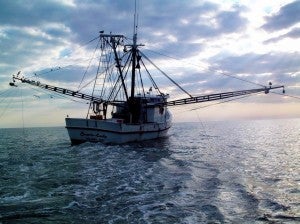It’s Official: U.S. fisheries continued their upward trend in 2012

Each year, the National Marine Fisheries Service provides the public with a “statistical snapshot” of fish landings in the United States. This week, the numbers for 2012 were released via the agency’s Fisheries in the United States report. The national picture in terms of the quantity and value of fish landed was once again encouraging. And although we didn’t quite reach the historic level of 2011—which set a new record for landings value —the upward trend enabled by improved fisheries management is unmistakable.
The raw numbers in the report are another reminder of the critical role fishing plays as an economic driver in the United States. U.S. commercial fishermen landed 9.6 billion pounds of seafood in 2012, valued at $5.1 billion. The ex-vessel value of seafood landed in Alaska alone was $1.7 billion; $618.2 million in Massachusetts; $448.5 million in Maine. Those figures don’t include economic benefits derived throughout the value chain, with jobs created and supported at the docks, in processing, transportation and sales.
Recreational fisheries are also experiencing robust activity. More than nine million anglers took 70 million trips last year, catching nearly 380 million fish. The estimated total catch weight was more than 200 million pounds, the most popular species being spotted seatrout, Atlantic croaker, black sea bass, summer flounder and red drum. Numerous other reports and studies have documented the economic benefits that recreational fishing stimulates, supporting jobs in industries ranging from marine manufacturing to tourism.
Without healthy, sustainable fisheries, none of these benefits would accrue. It’s true that we have more work to do to ensure that all our nation’s fisheries are being managed for long-term health, and that fishermen in some regions still face daunting economic challenges. But taken as a whole, this week’s report provides further evidence that the reforms of recent years are paying dividends. The value of commercial seafood landed in 2012 was almost 20% higher than the average of the last decade.
Ultimately that means more money in the pockets of fishermen—who in many parts of the country are seeing a return on their investment in new rights-based management approaches that incentivize conservation and ensure compliance with science-based catch limits.












